Audio Version: Click Player to Stream or Right Click on Link to Download. For full Audio Library of Past Messages, Click Here.
This article is for a niche of people within a niche of people. It is for people who not only know what Graphic Recording and Graphic Facilitation is but for those who want to experience FLOW with it.
To sum it up quickly, Graphic Recording (and its cousins, Graphic Facilitation and Graphic Coaching) are visual methodologies for doing process work with groups and individuals. See my Four Main Ways of Working Visually article & video for more details. Plus TONS of other related articles here.
A Whole Brain Approach:
What I have found fascinating about doing visual process work for two decades, is the role of both the left and right brain when being the practitioner and when being the receiver/participant of these methods.
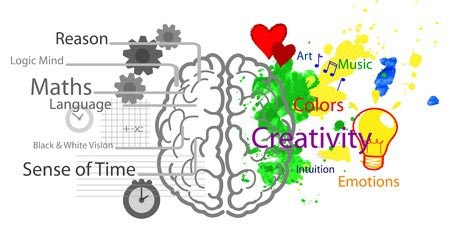
Graphic Facilitation, and Graphic Recording (which I shorten to “Interactive-Visuals”) are a strong marriage of the logical AND the intuitive. Both sides are needed and necessary.
The Initial Left Brain Learning Curve:
Learning visual process techniques is a fascinating process. Like anything that one learns, there is usually an initial phase where it’s quite mental and heady. A learner often embarks on an initial period of research, where they read and watch whatever they can get their hands on about these skills.
Early Experiential Steps: The Only Way Out Is Through
At some point a learner, if they really want to learn this work, has to bite the bullet and actually start DOING it. They enter an experiential phase where it’s awkward for a while, but the awkwardness is a necessary step towards mastery. Usually these initial experiential steps are quite mimicking too — the learner will mimic what their teacher shows them and copy the style of that teacher or others they have been exposed to.
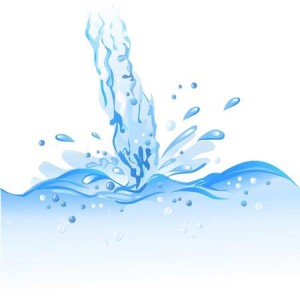 Flow: When the Right Brain Finally Kicks In
Flow: When the Right Brain Finally Kicks In
If the student sticks with it, they will eventually experience flow and even bliss with their work and develop their own signature style. This is the terrain that I want to talk about in this article. The territory where the left-brain and right-brains come together and very interesting things can happen for both practitioner and participant alike.
Being in FLOW in Graphic Recording (scribing):
In order to be a good Graphic Recorder, you eventually have to learn how to RELAX and TRUST. Initially it’s an intimidating thing to stand in a roomful of people with a completely blank wall in front of you and be expected to create something meaningful. You are dependent on being able to track who you are recording. And having your chops developed enough to keep up.
Some Graphic Recording situations are frankly awful. The speaker is not organized. Or the information is too complex for a recorder to do it justice (Graphic Facilitation or some other methodology should have been proposed instead). So flow, bliss and nirvana are NEVER gonna happen.
However, when conditions do line up correctly, flow happens, and it’s a BEAUTIFUL and FUN thing.
What Graphic Recording Flow is Like:
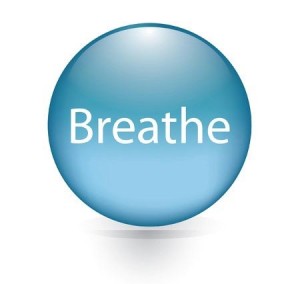 For me, Graphic Recording flow starts with breathing. I stand in front of that blank wall and I breathe, deeply.
For me, Graphic Recording flow starts with breathing. I stand in front of that blank wall and I breathe, deeply.
If I’m nervous, I notice my jitters (my heart beating, my self-consciousness of being watched, my hands shaking) and I keep breathing anyway, trying my best to ground my energy into the earth, even if I’m way up in a skyscraper.
And I then focus on my ears. It feels like my ears are extending. I’ve described this to my students as ‘like a zen bell’.
Like when you hit meditation bells together … the tone cascades out all in all directions. That is what my hearing and my other senses do when I’m waiting for the speaker to start and their wisdom nuggets to drop. Being in the NOW.
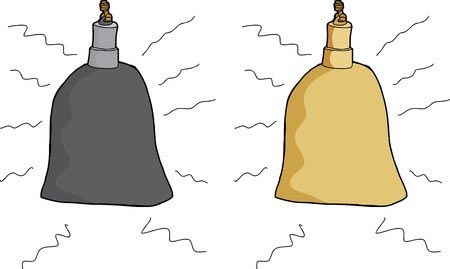
And then the speaker(s) start talking. And I keep breathing. I suppress the urge to write the very first thing. Instead, I breathe and wait for the first ‘wisdom nugget’ to drop. I wait for a formed statement or point. And, if there are stories which the speaker is using to support their point, then I collect them up too (as stories connect with listeners and usually have aspects that can be drawn).
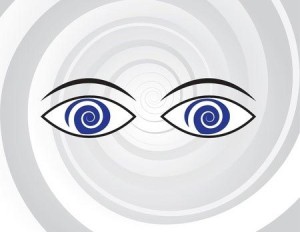 Sometimes, when I really get in the flow, I start to feel the urge to use colors or to draw certain things … that the speaker hasn’t even said yet. LOL, precognition!
Sometimes, when I really get in the flow, I start to feel the urge to use colors or to draw certain things … that the speaker hasn’t even said yet. LOL, precognition!
I get flashes of imagery or icons that run before my eyes. I’ve learned to pay attention to these flashes. To trust my intuition and what it is picking up on.
Often participants will marvel about how I knew to draw that. I marvel right along with them (HOW did I know to draw that?!). That’s the power of our subconscious mind, which is extremely aware, WAY before our conscious mind is.
Being in FLOW with Graphic Facilitation and Graphic Coaching:
In facilitation and coaching, I’m also in charge of the overall process that is happening (not just the visual record as in Graphic Recording). So flow in these methodologies is different for me … with them it’s less about the images and more about the flow of the session and its energy.
 Here too I have had to learn to TRUST … after having done all I can to prepare. One can craft an agenda, however what’s on paper is often different from what actually needs or want to occur. Group process often has a life of its own.
Here too I have had to learn to TRUST … after having done all I can to prepare. One can craft an agenda, however what’s on paper is often different from what actually needs or want to occur. Group process often has a life of its own.
A good facilitator and coach knows this and has respect for want wants to happen versus what they or their client thinks ‘should’ happen.
What Flow in Graphic Facilitation or Graphic Coaching Is Like:
Flow in Graphic Facilitation or Graphic Coaching settings, at least for me, has been about getting really comfortable with various types of energy and emotions, especially the tense ones. Breathing when the group (or people or a person within the group) is encountering frustration, anger, sadness or another seemingly uncomfortable emotion … and helping whomever this emotion is flowing through to express it (for the benefit of them and often for the group at large). And not just staying in the emotion, but moving through it to see what lays on the other side of it.
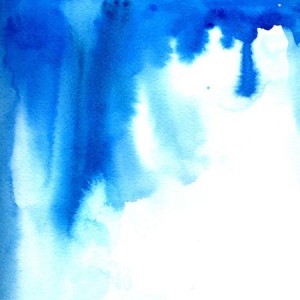 I have been in tense situations with groups and individuals, where I didn’t know what the heck to do … except breathe. And with the breath came an insight or some sort of hunch, nudge, idea or movement that wasn’t there a second ago. Grace. Either expressed through me or through someone else in the room.
I have been in tense situations with groups and individuals, where I didn’t know what the heck to do … except breathe. And with the breath came an insight or some sort of hunch, nudge, idea or movement that wasn’t there a second ago. Grace. Either expressed through me or through someone else in the room.
Then things flow like water down a stream again until the next blockage is encountered. And we keep progressing in that way until completion is reached, at least for that particular session.
Not Easy to Write About:
Hopefully what I am writing about makes sense. These right-brain, subtle energy things are difficult to write about because they are embodied experiences rather than logical mental states. However those of you who have recorded, facilitated or coached for a while, you will know what I mean. You have felt flow moments in your own work. You’ve moved with them rather than against them. And you, like me, probably thank goodness for them, as they are SO much wiser than we are on our own!
It’s these FLOW STATES that I enjoy most whether I’m working with a group or just one person. For me, it’s what keeps process work magical (whether visuals are used or not). I love coming up against something that seems hard, complicated or blocked to my left brain … then having the right brain (of my client and I in union) solve it from that other route. That fascinates me and keeps me coming back for more!

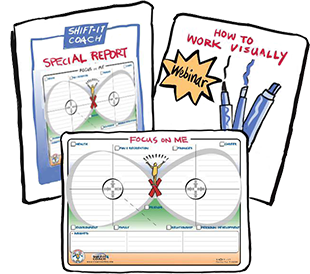

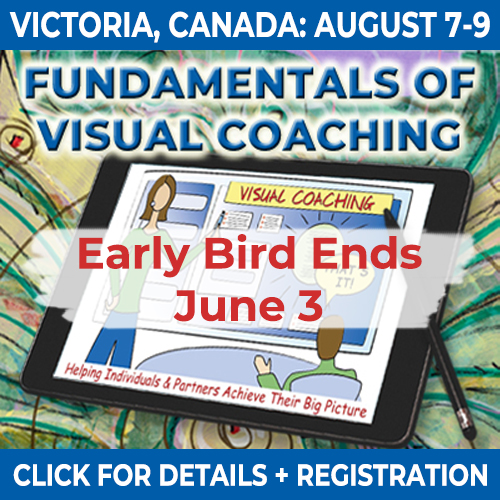
Well done Christina. Great explanation of something very difficult to explain. I have never been able to explain this well to myself so it hasn’t been as consistent an experience as I would like. with this article you have brought it forward from the unseen to knowledge. Thank you!